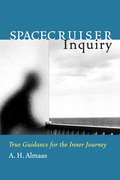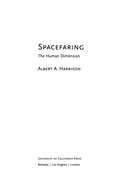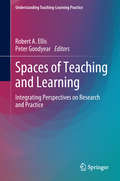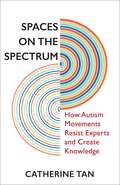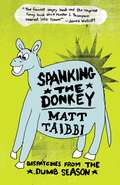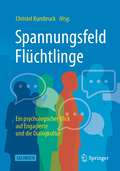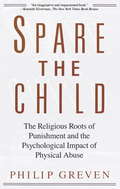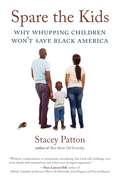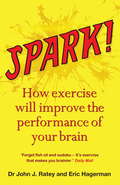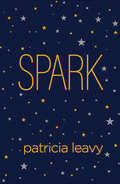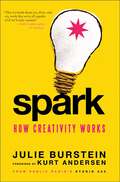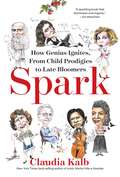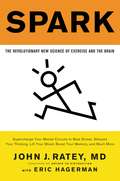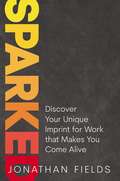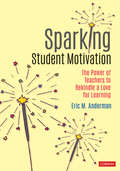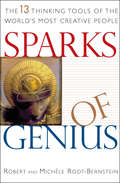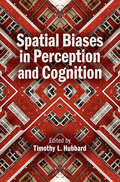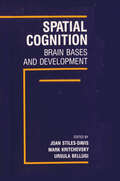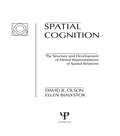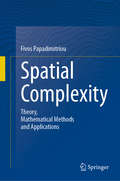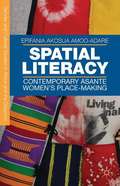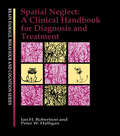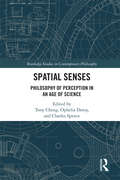- Table View
- List View
Spacecruiser Inquiry
by A. H. AlmaasOver the past twenty-five years A. H. Almaas--widely recognized as a leader in integrating spirituality and psychology--has been developing and teaching the Diamond Approach, a spiritual path that integrates the insights of Sufism, Buddhism, Gurdjieff, and other wisdom traditions with modern psychology. In this new work, Almaas uses the metaphor of a "spacecruiser" to describe a method of exploring the immediacy of personal experience--a way of investigating our moment-by-moment feelings, thoughts, reactions, and behaviors through a process of open-ended questioning. The method is called the practice of inquiry, and Spacecruiser Inquiry reveals what it means to engage with this practice as a spiritual path: its principles, challenges, and rewards. The author explores basic elements of inquiry, including the open-ended attitude, the focus on direct knowledge, the experience of not-knowing, and the process of questioning. He describes the experience of "Diamond Guidance"--the inner wisdom that emerges from our true nature--and how it can be realized and applied. In this process Almaas looks at many of the essential forms of Diamond Guidance, including knowing, clarity, truth, love, intelligence, compassion, curiosity, courage, and determination. Also included are exercises and questions and answers from the original talks by Almaas on which the book is based.
Spacefaring
by Albert A. HarrisonThe stars have always called us, but only for the past forty years or so have we been able to respond by traveling in space. This book explores the human side of spaceflight: why people are willing to brave danger and hardship to go into space; how human culture has shaped past and present missions; and the effects of space travel on health and well-being. A comprehensive and authoritative treatment of its subject, this book combines statistical studies, rich case histories, and gripping anecdotal detail as it investigates the phenomenon of humans in space--from the earliest spaceflights to the missions of tomorrow. Drawing from a strong research base in the behavioral sciences, Harrison covers such topics as habitability, crew selection and training, coping with stress, group dynamics, accidents, and more. In addition to taking a close look at spacefarers themselves, Spacefaring reviews the broad organizational and political contexts that shape human progress toward the heavens. With the ongoing construction of the International Space Station, the human journey to the stars continues, and this book will surely help guide the way.
Spaces of Teaching and Learning
by Peter Goodyear Robert A. EllisThis integrated collection of perspectives on the spaces of teaching and learning uses ‘learning space’ to place educational practice in context. It considers the complex relationships involved in the design, management and use of contemporary learning spaces. It sheds light on some of the problems of connecting the characteristics of spaces to the practices and outcomes of teaching and learning. The contributions show how research into learning spaces can inform broader educational practices and how the practices of teaching, learning and design can inform research. The selection of chapters demonstrates the value of gathering together multiple sources of evidence, viewed through different epistemological lenses in order to push the field forward in a timely fashion. The book provides both a broad review of current practices as well as a deep-dive into particular educational and epistemological challenges that the various approaches adopted entail. Contrasts and commonalities between the different approaches emphasise the importance of developing a broad, robust evidence-base for practice in context. This is the inaugural book in the series Understanding Teaching-Learning Practice.
Spaces on the Spectrum: How Autism Movements Resist Experts and Create Knowledge
by Catherine TanMovements that take issue with conventional understandings of autism spectrum disorder, a developmental disability, have become increasingly visible. Drawing on more than three years of ethnographic fieldwork and interviews with participants, Catherine Tan investigates two autism-focused movements, shedding new light on how members contest expert authority. Examining their separate struggles to gain legitimacy and represent autistic people, she develops a new account of the importance of social movements as spaces for constructing knowledge that aims to challenge dominant frameworks.Spaces on the Spectrum examines the autistic rights and alternative biomedical movements, which reimagine autism in different and conflicting ways: as a difference to be accepted or as a sickness to treat. Both, however, provide a window into how ideas that conflict with dominant beliefs develop, take hold, and persist. The autistic rights movement is composed primarily of autistic adults who contend that autism is a natural human variation, not a disorder, and advocate for social and cultural inclusion and policy changes. The alternative biomedical movement, in contrast, is dominated by parents and practitioners who believe in the disproven idea that vaccines trigger autism and seek to reverse it with scientifically unsupported treatments. Both movements position themselves in opposition to researchers, professionals, and parents outside their communities. Spaces on the Spectrum offers timely insights into the roles of shared identity and communal networks in movements that question scientific and medical authority.
Spanking the Donkey: Dispatches from the Dumb Season
by Matt Taibbi"Spanking the Donkey" indicts the surreal irrelevance of today's mainstream politics with barbed wit and caustic intelligence. Follow Taibbi as he covers the primary for the 2004 presidential election, joining him for a spot on John Kerry's campaign plane, face-to-face encounters with John Edwards's pancake makeup, and more.
Spannungsfeld Flüchtlinge: Ein psychologischer Blick auf Engagierte und die Dialogkultur
by Christel KumbruckDieses Buch analysiert wissenschaftlich fundiert und zugleich allgemeinverständlich das Engagement von Menschen, die sich für die Aufnahme von Geflüchteten oder gegen die deutsche Flüchtlingspolitik engagieren, sowie ihre Motive, Emotionen, Denk- und Argumentationsweisen. Dabei werden psychologische Mechanismen, die ursächlich für die viel diskutierte Polarisierung unserer modernen Gesellschaft sind, deutlich. Erstmalig werden die tieferen Ursachen für bestehende Dialogbarrieren aufgespürt und mit psychologischen Modellen erklärt. Dabei decken die Autor*innen neben polarisierenden Dialogprozessen auch Gemeinsamkeiten beider Seiten auf und erarbeiten daraus Ansatzpunkte für Dialogchancen und eine Depolarisierung der Kommunikation. Neben der psychologischen Betrachtung erfolgt außerdem eine Einordung der beschriebenen, empirisch ermittelten Erkenntnisse in übergeordnete soziokulturelle Prozesse und gesellschaftliche Rahmenbedingungen. Auch hieraus werden Lösungsansätze, diesmal auf der Ebene von Politik und Gesellschaft, erarbeitet. Ein Buch für alle, die mehr Einblicke in das Flüchtlingsengagement haben wollen, die sich in Politik, Beratung, Coaching, Erziehung u.ä. aktiv an der Bewahrung einer Dialogkultur beteiligen, oder zumindest die (psychologischen) Mechanismen verstehen möchten, welche eine Polarisierung der Gesellschaft fördern."Dieses klare und differenzierte Arbeitsbuch ist eine großartige Hilfe zum Selbstdenken." - Prof. Aleida Assmann"Flucht und Migration werden Deutschland weiterhin vor Herausforderungen stellen. Dieses Buch zeigt nachvollziehbar, wie Wahrnehmungs-, Denk- und Handlungsweisen zu einer destruktiven Polarisierung beitragen können, aber auch welche Möglichkeiten wir alle haben, um der Falle vergifteter Kommunikation zu entgehen: ein hilfreiches Buch, um demokratischen Zusammenhalt zu stärken." - Prof. Eva Senghaas-Knobloch
Spare the Child: The Religious Roots of Punishment and the Psychological Impact of Physical Abuse
by Philip GrevenHe that spareth his rod hateth his son: but he that loveth him chasteneth him betimes. These words provided generations of American Christians with the justification for physically disciplining their children, in ways that range from spankings to brutal beatings. This learned and deeply disturbing work of history examines both the religious roots of corporal punishment in America and its consequences -- in the minds of children, in adults, and in our national tendencies toward authoritarian and apocalyptic thinking. Drawing on sources as old as Cotton Mather and as current as today's headlines, Spare the Child is one of those rare works of scholarship that have the power to change our lives.
Spare the Kids: Why Whupping Children Won't Save Black America
by Stacey PattonA challenge to the cultural tradition of corporal punishment in Black homes and its connections to racial violence in AmericaWhy do so many African Americans have such a special attachment to whupping children? Studies show that nearly 80 percent of black parents see spanking, popping, pinching, and beating as reasonable, effective ways to teach respect and to protect black children from the streets, incarceration, encounters with racism, or worse. However, the consequences of this widely accepted approach to child-rearing are far-reaching and seldom discussed. Dr. Stacey Patton’s extensive research suggests that corporal punishment is a crucial factor in explaining why black folks are subject to disproportionately higher rates of school suspensions and expulsions, criminal prosecutions, improper mental health diagnoses, child abuse cases, and foster care placements, which too often funnel abused and traumatized children into the prison system.Weaving together race, religion, history, popular culture, science, policing, psychology, and personal testimonies, Dr. Patton connects what happens at home to what happens in the streets in a way that is thought-provoking, unforgettable, and deeply sobering. Spare the Kids is not just a book. It is part of a growing national movement to provide positive, nonviolent discipline practices to those rearing, teaching, and caring for children of color.
Spark
by Eric Hagerman John Ratey Dr John J. Ratey Dr John RateyExercise is not only good for the body: it can transform your mind too. We all know that exercise is good for the body. But did you know that it can transform your mind? This new scientific revolution will teach you how to boost brain cells, protect yourself against mental illness and dementia, and ensure success in exams and the workplace. Follow the SPARK! training regimen and build your brain to its peak performance. This book will change the way you think about exercise - and, for that matter, the way you think.
Spark
by Patricia LeavyProfessor Peyton Wilde has an enviable life teaching sociology at an idyllic liberal arts college--yet she is troubled by a sense of fading inspiration. One day an invitation arrives. Peyton has been selected to attend a luxurious all-expense-paid seminar in Iceland, where participants, billed as some of the greatest thinkers in the world, will be charged with answering one perplexing question. Meeting her diverse teammates--two neuroscientists, a philosopher, a dance teacher, a collage artist, and a farmer--Peyton wonders what she could ever have to contribute. The ensuing journey of discovery will transform the characters' work, their biases, and themselves. This suspenseful novel shows that the answers you seek can be found in the most unlikely places. It can be read for pleasure, is a great choice for book clubs, and can be used as unique and inspiring reading in qualitative research and other courses in education, sociology, social work, psychology, and communication.
Spark: How Creativity Works
by Julie Burstein“This is a book about joy, drive and art, work that we’re all capable of if we’ll only commit.” —Seth Godin, author of LinchpinPublic Radio International’s Julie Burstein, creator of the award-winning program Studio 360, along with its host Kurt Andersen, offers a rare, fascinating glimpse into some of the 21st century's greatest creative minds—from Yo-Yo Ma and Robert Plant to Mira Nair and Chuck Close, to David Milch and Joyce Carol Oates, to Rosanne Cash and beyond. Fans of Malcolm Gladwell’s Outliers, Daniel Pink’s A Whole New Mind, Rosamund Zander’s The Art of Possibility, and Lynda Barry’s What It Is will be enthralled and electrified by this unique look at the creative process of the world’s most talented and prolific artists.
Spark: How Genius Ignites, From Child Prodigies to Late Bloomers
by Claudia KalbYo-Yo Ma's ear for music emerged not long after he learned to walk. By the age of seven, he was performing for President Kennedy; by fifteen he debuted at Carnegie Hall. Maya Angelou, by contrast, didn't write her iconic memoir, I Know Why the Cage Bird Sings, until she was 40. What propels some individuals to reach extraordinary creative heights in the earliest years of life while others discover their passions decades later? Are prodigies imbued with innate talent? How often are midlife inspirations triggered by propitious events, like Julia Child's first French meal at the age of 36? Do late bloomers reveal their talents because their skills require life experience and contemplation? Through engaging storytelling and intriguing historical and cutting-edge scientific research, best-selling author and acclaimed journalist Claudia Kalb explores these questions to uncover what makes a prodigy and what drives a late bloomer. In this series of linked biographies, Kalb follows the journeys of thirteen remarkable individuals--from Shirley Temple to Alexander Fleming to Eleanor Roosevelt to Bill Gates--to discover the secrets behind their talents. Each possessed a unique arc of inspiration. Each--through science, art, music, theater, and politics--reached extraordinary success at different stages of life. And each offers us a chance to explore the genesis--and experience--of genius.
Spark: The Revolutionary New Science of Exercise and the Brain
by John J. Ratey Eric HagermanA groundbreaking and fascinating investigation into the transformative effects of exercise on the brain, from the bestselling author and renowned psychiatrist John J. Ratey, MD. Did you know you can beat stress, lift your mood, fight memory loss, sharpen your intellect, and function better than ever simply by elevating your heart rate and breaking a sweat? The evidence is incontrovertible: Aerobic exercise physically remodels our brains for peak performance. In SPARK, John J. Ratey, M.D., embarks upon a fascinating and entertaining journey through the mind-body connection, presenting startling research to prove that exercise is truly our best defense against everything from depression to ADD to addiction to aggression to menopause to Alzheimer's. Filled with amazing case studies (such as the revolutionary fitness program in Naperville, Illinois, which has put this school district of 19,000 kids first in the world of science test scores), SPARK is the first book to explore comprehensively the connection between exercise and the brain. It will change forever the way you think about your morning run---or, for that matter, simply the way you think
Sparked: Discover Your Unique Imprint for Work that Makes You Come Alive
by Jonathan FieldsDiscover your unique imprint for work that makes you come alive, fills you with meaning, joy, purpose, and possibility, then spend the rest of your life doing it.We&’re all born with a certain &“imprint&” for work that makes us come alive. This is your "Sparketype®," your DNA-level driver of work that lets you know, deep down, you&’re doing what you&’re here to do. Work that motivates you, fills you with purpose and, fully-expressed in a healthy way, becomes a main-line to meaning, flow, performance, and joy. Put another way, work that &“sparks&” you.Drawing upon years of research, experimentation, more than 25-million data-points generated by over half-a-million people, hundreds of deep-dive conversations with luminaries from science to art to industry and wellbeing. Award-winning author, serial wellness-industry founder, and host of the top-ranked Good Life Project®, Jonathan Fields, and his team at Spark Endeavors, developed the Sparketype imprints and methodology that is the basis of this book.SPARKED takes you deep into the world of the Sparketypes, revealing an entirely new depth of insights about what makes you come alive in work life, along with what empties you out and trips you up, so you can avoid those life-drains. You&’ll discover tons of case studies, stories, and real-world applications, creating a comprehensive guide to help you discover what you are meant to do and how to get started.This book will help you:Discover, with far more depth, what sparks you, what drains you, where you stumble and come alive, so you can reclaim a sense of direction, control, and purpose;Understand the &“real&” reasons certain experiences, jobs, and roles leave you empty and know how to make things better, without having to endure big disruptive changes;Learn from real-world, relatable stories, case-studies, and data-driven insightsIdentify the action steps to begin immediately transforming the way you work and live.
Sparking Student Motivation: The Power of Teachers to Rekindle a Love for Learning (Corwin Teaching Essentials)
by Eric M. AndermanBe the change that lights the learning fire. Discover how you, as a classroom teacher, can generate enthusiasm, confidence, and joy in your students that will affect their learning and lives. Delve into the what, and why of motivation and how it affects learning. Then, learn how to spark motivation using practical, research-informed strategies that address how to ? Hone student grouping, rewards, technology, and competition for positive impact ? Confront and disarm testing conflicts to make assessments a pleasant student experience ? Examine and empower teacher–student relationships ? Rethink rules and procedures to improve behavioral outcomes
Sparking Student Motivation: The Power of Teachers to Rekindle a Love for Learning (Corwin Teaching Essentials)
by Eric M. AndermanBe the change that lights the learning fire. Discover how you, as a classroom teacher, can generate enthusiasm, confidence, and joy in your students that will affect their learning and lives. Delve into the what, and why of motivation and how it affects learning. Then, learn how to spark motivation using practical, research-informed strategies that address how to ? Hone student grouping, rewards, technology, and competition for positive impact ? Confront and disarm testing conflicts to make assessments a pleasant student experience ? Examine and empower teacher–student relationships ? Rethink rules and procedures to improve behavioral outcomes
Sparks of Genius: The 13 Thinking Tools of the World's Most Creative People
by Robert Root-Bernstein Michèle Root-BernsteinDiscover the cognitive tools that lead to creative thinking and problem-solving with this &“well-written and easy-to-follow&” guide (Library Journal). Explore the &“thinking tools&” of extraordinary people, from Albert Einstein and Jane Goodall to Mozart and Virginia Woolf, and learn how you can practice the same imaginative skills to become your creative best. With engaging narratives and examples, Robert and Michèle Root-Bernstein investigate cognitive tools such as observing, recognizing patterns, modeling, playing, and more. Sparks of Genius is &“a clever, detailed and demanding fitness program for the creative mind&” and a groundbreaking guidebook for anyone interested in imaginative thinking, lifelong learning, and transdisciplinary education (Kirkus Reviews). &“How different the painter at the easel and the physicist in the laboratory! Yet the Root-Bernsteins recognize the deep-down similarity of all creative thinking, whether in art or science. They demonstrate this similarity by comparing the accounts that various pioneers and inventors have left of their own creative processes: for Picasso just as for Einstein, for Klee just as for Feynman, the creative impulse always begins in vision, in emotion, in intuition. . . . With a lavishly illustrated chapter devoted to each tool, readers quickly realize just how far the imagination can stretch.&” —Booklist &“A powerful book . . . Sparks of Genius presents radically different ways of approaching problems.&” —American Scientist
Sparse Representation, Modeling and Learning in Visual Recognition
by Hong ChengThis unique text/reference presents a comprehensive review of the state of the art in sparse representations, modeling and learning. The book examines both the theoretical foundations and details of algorithm implementation, highlighting the practical application of compressed sensing research in visual recognition and computer vision. Topics and features: describes sparse recovery approaches, robust and efficient sparse representation, and large-scale visual recognition; covers feature representation and learning, sparsity induced similarity, and sparse representation and learning-based classifiers; discusses low-rank matrix approximation, graphical models in compressed sensing, collaborative representation-based classification, and high-dimensional nonlinear learning; includes appendices outlining additional computer programming resources, and explaining the essential mathematics required to understand the book.
Spatial Biases in Perception and Cognition
by Timothy L. HubbardOur experience of the world is influenced by numerous spatial biases, most of which influence us without our being aware of them. These biases are related to illusions and asymmetries in our perception of space, relationships between space and other qualities, dynamics of moving objects, dynamics of scene configuration, and dynamics related to perception and action. Consideration of these biases provides insight into how we perceive, remember, and navigate space, as well as how we interact with objects and people in space. This volume introduces and reviews numerous spatial biases, and provides descriptions and examples of each bias. The contributors discuss historical and current theories for many biases, and for some biases, provide new explanatory theories. Providing a 'one-stop shop' for information on such a key aspect of our experience in the world, this volume will interest anyone curious about our understanding of space.
Spatial Cognition: Brain Bases and Development
by Joan Stiles-Davis Mark Kritchevsky Ursula BellugiLooking at the ways humans perceive, interpret, remember, and interact with events occurring in space, this book focuses on two aspects of spatial cognition: How does spatial cognition develop? What is the relation between spatial cognition and the brain? This book offers a unique opportunity to share the combined efforts of scientists from varied disciplines, including cognitive and developmental psychology, neuropsychology, behavioral neurology, and neurobiology in the process of interacting and exchanging ideas. Based on a conference held at the Neuroscience Conference Center of the Salk Institute for Biological Studies, this book explores current scientific trends seeking a biological basis for understanding the relationships among brain, mind, and behavior.
Spatial Cognition: The Structure and Development of Mental Representations of Spatial Relations
by D. R. Olson E. BialystokFirst published in 1983. Routledge is an imprint of Taylor & Francis, an informa company.
Spatial Complexity: Theory, Mathematical Methods and Applications
by Fivos PapadimitriouThis book delivers stimulating input for a broad range of researchers, from geographers and ecologists to psychologists interested in spatial perception and physicists researching in complex systems. How can one decide whether one surface or spatial object is more complex than another? What does it require to measure the spatial complexity of small maps, and why does this matter for nature, science and technology? Drawing from algorithmics, geometry, topology, probability and informatics, and with examples from everyday life, the reader is invited to cross the borders into the bewildering realm of spatial complexity, as it emerges from the study of geographic maps, landscapes, surfaces, knots, 3D and 4D objects. The mathematical and cartographic experiments described in this book lead to hypotheses and enigmas with ramifications in aesthetics and epistemology.
Spatial Literacy
by Epifania Akosua Amoo-AdareThis book makes the case for an urgent praxis of critical spatial literacy for African women. It provides a critical analysis of how Asante women negotiate and understand the politics of contemporary space in Accra and beyond and the effect it has on their lives, demonstrating how they critically 'read that world. '
Spatial Neglect: A Clinical Handbook for Diagnosis and Treatment (Brain, Behaviour and Cognition)
by Ian Robertson Peter W HalliganSpatial neglect is a profound clinical problem as well as intriguing scientific problem. In the last ten years, there has been an explosion of interest in this disorder, which as a result is no longer viewed as a single entity, but rather as a number of different disorders. This book is an attempt to bring the reader up to date with the latest advances in understanding neglect, at least insofar as this contributes to better clinical assessment, management and treatment. This is not a book for the specialist researcher in the neuropsychology of neglect and attention. Rather, it is a book aimed at clinicians - student and trained - from all disciplines involved in the assessment, management and treatment of neglect.The book begins with the description of four cases manifesting different types of unilateral neglect. The reader is introduced to different aspects of neglect through these patients. These distinctions include those between personal and extrapersonal neglect, motor versus sensory neglect and many others. The reader is also introduced to other phenomena that are closely related to neglect, including ansognosia and impaired sustained attention. The latest methodes of assessment of neglect are also described, as are methods of treatment, again with reference to the four introductory specimen cases.
Spatial Senses: Philosophy of Perception in an Age of Science (Routledge Studies in Contemporary Philosophy)
by Charles Spence Tony Cheng Ophelia DeroyThis collection of essays brings together research on sense modalities in general and spatial perception in particular in a systematic and interdisciplinary way. It updates a long-standing philosophical fascination with this topic by incorporating theoretical and empirical research from cognitive science, neuroscience, and psychology. The book is divided thematically to cover a wide range of established and emerging issues. Part I covers notions of objectivity and subjectivity in spatial perception and thinking. Part II focuses on the canonical distal senses, such as vision and audition. Part III concerns the chemical senses, including olfaction and gustation. Part IV discusses bodily awareness, peripersonal space, and touch. Finally, the volume concludes with Part V on multimodality. Spatial Senses is an important contribution to the scholarly literature on the philosophy of perception that takes into account important advances in the sciences.
